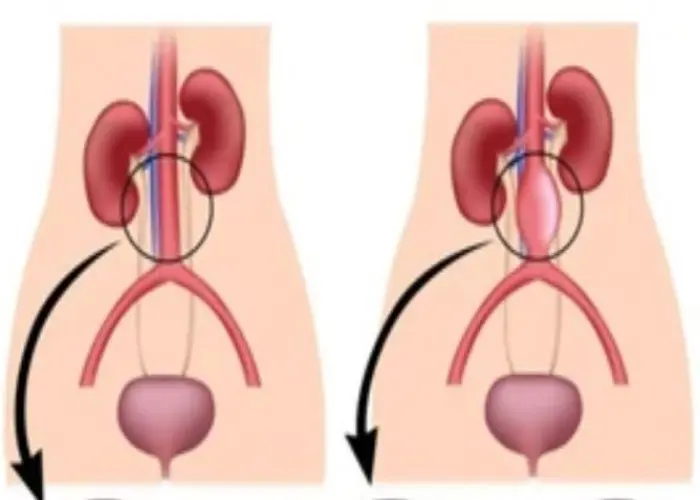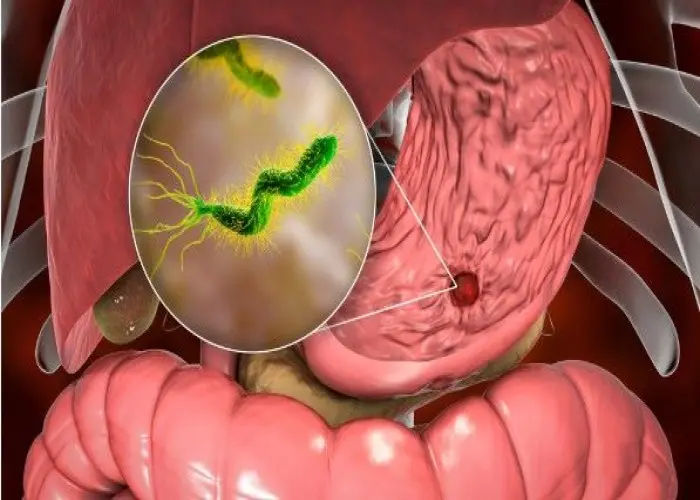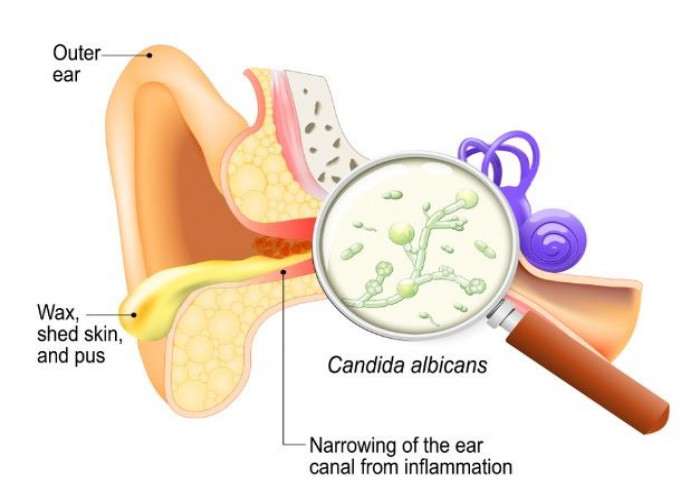 Welcome
Welcome
“May all be happy, may all be healed, may all be at peace and may no one ever suffer."
Ear infection (middle ear)

A middle ear infection, also known as otitis media, is an infection that occurs in the middle ear, the space behind the eardrum that contains the tiny bones that transmit sound. Middle ear infections are common, particularly in children, but can occur in people of all ages.
Middle ear infections are typically caused by bacteria or viruses that enter the middle ear through the Eustachian tube, which connects the middle ear to the back of the throat. The Eustachian tube can become blocked or swollen, trapping fluid in the middle ear and creating an environment for infection to occur.
Symptoms of a middle ear infection can include ear pain, fever, hearing loss, and a feeling of fullness in the ear. In children, symptoms may also include fussiness, pulling at the ear, and difficulty sleeping.
Treatment for a middle ear infection typically involves managing symptoms with over-the-counter pain relievers and/or prescription antibiotics, if the infection is bacterial. In some cases, a doctor may recommend a surgical procedure to insert ear tubes in the ear to help drain fluid and prevent future infections.
It's important to seek medical attention if you suspect you or your child has a middle ear infection, as untreated infections can lead to complications such as hearing loss or the infection spreading to nearby tissues. Additionally, chronic or recurrent middle ear infections may require further evaluation and treatment by an ear, nose, and throat (ENT) specialist.
Research Papers
Disease Signs and Symptoms
- Ear pain
- Trouble sleep (insomnia)
- Decreased hearing
- Lose balance
- Fever
- Headaches
- Loss of appetite
Disease Causes
Ear infection (middle ear)
An ear infection is caused by a bacterium or virus in the middle ear. This infection often results from another illness — cold, flu or allergy — that causes congestion and swelling of the nasal passages, throat and eustachian tubes.
Role of eustachian tubes
The eustachian tubes are a pair of narrow tubes that run from each middle ear to high in the back of the throat, behind the nasal passages. The throat end of the tubes open and close to:
- Regulate air pressure in the middle ear
- Refresh air in the ear
- Drain normal secretions from the middle ear
Swollen eustachian tubes can become blocked, causing fluids to build up in the middle ear. This fluid can become infected and cause the symptoms of an ear infection.
In children, the eustachian tubes are narrower and more horizontal, which makes them more difficult to drain and more likely to get clogged.
Role of adenoids
Adenoids are two small pads of tissues high in the back of the nose believed to play a role in immune system activity.
Because adenoids are near the opening of the eustachian tubes, swelling of the adenoids may block the tubes. This can lead to middle ear infection. Swelling and irritation of adenoids is more likely to play a role in ear infections in children because children have relatively larger adenoids compared to adults.
Related conditions
Conditions of the middle ear that may be related to an ear infection or result in similar middle ear problems include:
- Otitis media with effusion, or swelling and fluid buildup (effusion) in the middle ear without bacterial or viral infection. This may occur because the fluid buildup persists after an ear infection has gotten better. It may also occur because of some dysfunction or noninfectious blockage of the eustachian tubes.
- Chronic otitis media with effusion, occurs when fluid remains in the middle ear and continues to return without bacterial or viral infection. This makes children susceptible to new ear infections and may affect hearing.
- Chronic suppurative otitis media, an ear infection that doesn't go away with the usual treatments. This can lead to a hole in the eardrum.
Disease Prevents
Ear infection (middle ear)
The following tips may reduce the risk of developing ear infections:
- Prevent common colds and other illnesses. Teach your children to wash their hands frequently and thoroughly and to not share eating and drinking utensils. Teach your children to cough or sneeze into their elbow. If possible, limit the time your child spends in group child care. A child care setting with fewer children may help. Try to keep your child home from child care or school when ill.
- Avoid secondhand smoke. Make sure that no one smokes in your home. Away from home, stay in smoke-free environments.
- Breast-feed your baby. If possible, breast-feed your baby for at least six months. Breast milk contains antibodies that may offer protection from ear infections.
- If you bottle-feed, hold your baby in an upright position. Avoid propping a bottle in your baby's mouth while he or she is lying down. Don't put bottles in the crib with your baby.
- Talk to your doctor about vaccinations. Ask your doctor about what vaccinations are appropriate for your child. Seasonal flu shots, pneumococcal and other bacterial vaccines may help prevent ear infections.
Disease Treatments
Some ear infections resolve without antibiotic treatment. What's best for your child depends on many factors, including your child's age and the severity of symptoms.
A wait-and-see approach
Symptoms of ear infections usually improve within the first couple of days, and most infections clear up on their own within one to two weeks without any treatment. The American Academy of Pediatrics and the American Academy of Family Physicians recommend a wait-and-see approach as one option for:
- Children 6 to 23 months with mild middle ear pain in one ear for less than 48 hours and a temperature less than 102.2 F (39 C)
- Children 24 months and older with mild middle ear pain in one or both ears for less than 48 hours and a temperature less than 102.2 F (39 C)
Some evidence suggests that treatment with antibiotics might be helpful for certain children with ear infections. On the other hand, using antibiotics too often can cause bacteria to become resistant to the medicine. Talk with your doctor about the potential benefits and risks of using antibiotics.
Managing pain
Your doctor will advise you on treatments to lessen pain from an ear infection. These may include the following:
- Pain medication. Your doctor may advise the use of over-the-counter acetaminophen (Tylenol, others) or ibuprofen (Advil, Motrin IB, others) to relieve pain. Use the drugs as directed on the label. Use caution when giving aspirin to children or teenagers. Children and teenagers recovering from chickenpox or flu-like symptoms should never take aspirin because aspirin has been linked with Reye's syndrome. Talk to your doctor if you have concerns.
- Anesthetic drops. These may be used to relieve pain if the eardrum doesn't have a hole or tear in it.
Antibiotic therapy
After an initial observation period, your doctor may recommend antibiotic treatment for an ear infection in the following situations:
- Children 6 months and older with moderate to severe ear pain in one or both ears for at least 48 hours or a temperature of 102.2 F (39 C) or higher
- Children 6 to 23 months with mild middle ear pain in one or both ears for less than 48 hours and a temperature less than 102.2 F (39 C)
- Children 24 months and older with mild middle ear pain in one or both ears for less than 48 hours and a temperature less than 102.2 F (39 C)
Children younger than 6 months of age with confirmed acute otitis media are more likely to be treated with antibiotics without the initial observational waiting time.
Even after symptoms have improved, be sure to use the antibiotic as directed. Failing to take all the medicine can lead to recurring infection and resistance of bacteria to antibiotic medications. Talk with your doctor or pharmacist about what to do if you accidentally miss a dose.
Ear tubes
If your child has certain conditions, your child's doctor may recommend a procedure to drain fluid from the middle ear. If your child has repeated, long-term ear infections (chronic otitis media) or continuous fluid buildup in the ear after an infection cleared up (otitis media with effusion), your child's doctor may suggest this procedure.
During an outpatient surgical procedure called a myringotomy, a surgeon creates a tiny hole in the eardrum that enables him or her to suction fluids out of the middle ear. A tiny tube (tympanostomy tube) is placed in the opening to help ventilate the middle ear and prevent the buildup of more fluids. Some tubes are intended to stay in place for four to 18 months and then fall out on their own. Other tubes are designed to stay in longer and may need to be surgically removed.
The eardrum usually closes up again after the tube falls out or is removed.
Treatment for chronic suppurative otitis media
Chronic infection that results in a hole or tear in the eardrum — called chronic suppurative otitis media — is difficult to treat. It's often treated with antibiotics administered as drops. You may receive instructions on how to suction fluids out through the ear canal before administering drops.
Monitoring
Children who have frequent infections or who have persistent fluid in the middle ear will need to be monitored closely. Talk to your doctor about how often you should schedule follow-up appointments. Your doctor may recommend regular hearing and language tests.
Disease Diagnoses
Disease Allopathic Generics
-
Hydrogen peroxide
A few drops of hydrogen peroxide with Perthydrol in the ear canal will bubble up. The ear should then be thoroughly cleaned with a sterile cotton swab to remove any hydrogen peroxide. Its current use is very little.
-
Aspirin
Any medicine containing aspirin for earache. 1+1+1.
-
Paracetamol
Any medicine containing aspirin for earache. 1/2 teaspoon 3 times a day.
-
Diclofenac Potassium
A drug containing diclofenac potassium as a rapid anti-inflammatory and analgesic.
1 tablet 3 times a day before or between meals.
-
Amoxicillin Trihydrate
1 capsule 3 times a day for 5-7 days.
-
Cephradine
1 every 6 hours or 500mg every 12 hours.
-
Erythromycin (Oral)
Erythromycin is a combination drug for those who cannot tolerate penicillin.
1 pill a day at night 4 times for 7 days.
-
Chlorpheniramine Maleate
Antihistamine medicine for watery ear.
1 pill 3 times a day or 1/2 teaspoon 3 times a day.
-
Promethazine Hydrochloride
Antihistamine medicine for watery ear.
1 pill 3 times a day or 1/2 teaspoon 3 times a day.
-
Pheniramine Maleate
Antihistamine medicine for watery ear.
1/2, 1 spoon or 1 pill 3 times a day.
-
Cotrimoxazole
Medicines containing trimoxazole for inflammation.
2 pills in the morning and 2 pills in the afternoon after meals. Boys and Girls 1 pill in the morning and 1 pill in the afternoon for 5 days or two more days after it subsides.
-
Cloxacillin Sodium
Medicines containing trimoxazole for inflammation.
1 capsule every 6 hours. 2-10 is only half of the selection.
-
Flucloxacillin Sodium
Medicines containing trimoxazole for inflammation.
1 capsule every 6 hours.
-
Azithromycin Dihydrate
Medicines containing trimoxazole for inflammation.
Half / 1 spoon daily for 3-5 days.
-
Ciprofloxacin
Medicines containing trimoxazole for inflammation.
1 pill of 250 mg for boys and girls, 1 pill of 500 mg for adults in the morning and 1 pill at night.
-
Mebhydrolin Napadisylate
Adults take 1/2 pill 3 times a day. Boys and girls give 1 pill 2/3 times.
-
Diclofenac Sodium
1 pill daily day or night.
-
Ranitidine Hydrochloride
Pain pills cause gas so gas medicine is given to stop it.
-
Xylometazoline Hydrochloride
To reduce tympanic membrane congestion. 1/2 drop in both nostrils 2/3 times a day.
- Tropicamide + Phenylephrine Hydrochloride
- Oxymetazoline Hydrochloride 0.025%
- Oxytetracycline
-
Nicotinic Acid [Niacin]
1/2 pill 3 times a day. The dose should be increased gradually i.e. after a few weeks 1 pill 3 times a day. This medicine should be taken for a long time.
-
Ferrous Sulfate
If the patient is weak and feels the sound in the ear. 1 each 2/3 times a day after meals.
-
Vitamin B complex
1-4 spoons 3 times a day after meals.
Disease Ayurvedic Generics
Disease Homeopathic Generics
-
Aconite
1X, 3X power.
-
Pulsatilla
6, 30, 200 power.
-
Tellurium
30 power.
Disease yoga
Ear infection (middle ear) and Learn More about Diseases

Dry macular degeneration

Hair loss

Schizoaffective disorder

Gaucher disease

Aortic aneurysm

Duodenal Ulcer

Bee sting

Costochondritis
ear infection, middle ear, কানের সংক্রমণ, মাঝের কান
To be happy, beautiful, healthy, wealthy, hale and long-lived stay with DM3S.
